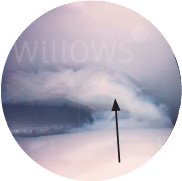Why Should I Bring my Pet to Willows for Treatment of Osteochondrosis?
Willows is one of Europe’s leading small animal Orthopaedic referral centres treating over 1000 new patients a year. Our state-of-the-art hospital is led by internationally renowned Certified Specialists committed to providing the highest standards of care. Our team of Orthopaedic Specialists have considerable collective experience of managing animals with osteochondrosis.
Our Orthopaedic Surgeons are supported by our multi-disciplinary team of Specialists across a number of disciplines including; Anaesthesia, Diagnostic Imaging and Emergency and Critical Care. Willows has a large dedicated team of Nurses and clinical support staff available 24 hours a day, every day of the year to provide the best possible care for your pet.
What is Osteochondrosis?
Osteochondrosis is a common condition affecting the joints of young, rapidly growing dogs such as Labradors, Rottweilers and Great Danes. The surface of the joint (cartilage) fails to convert into bone. This results in an area of thickened cartilage that is weak and may become loose, forming a flap. This process is called Osteochondritis Dissecans (OCD). Osteochondrosis primarily affects the shoulder, elbow, knee (stifle) and ankle (hock) joints.
What are the Most Common Causes of Osteochondrosis?
Genetics is considered to be the main causes of osteochondrosis. Most research has been done on the elbow where genetics plays a major role. Other causes may include nutrition, exercise and housing.
How is Osteochondrosis Diagnosed?
Signs usually develop under the age of one (typically five to eight months). The key signs are lameness and stiffness, most evident after rest following exercise. Examination may reveal muscle wastage with painful, swollen joints. A CT scan is the most accurate way to diagnose osteochondrosis. This also allows presence and severity of secondary osteoarthritis to be assessed.

What are the treatments available for Osteochondrosis?
Shoulder osteochondrosis
Surgery is usually performed via keyhole surgery to remove the fragment of loose cartilage. Following removal of the flap of cartilage the defect heals with an inferior type of cartilage called fibrocartilage. If the flap is not removed pain and lameness may persist as long as the cartilage flap remains attached.
Fig 1: Fragment of cartilage being removed from a shoulder arthroscopically

Elbow osteochondrosis
Elbow osteochondrosis is considered to be a sign of elbow dysplasia. Some dogs with elbow osteochondrosis can be managed satisfactorily without the need for surgery. This involves exercise control, weight loss and pain relief. Dogs with elbow dysplasia that fail to respond satisfactorily to conservative treatment may need surgery. Common surgeries include:
- Fragment removal surgery: The most common form of surgery, involving the removal of loose fragments of cartilage and bone from the inside of the elbow joint through key hole surgery
- Joint resurfacing: A graft of cartilage and bone can be transplanted from another joint and used to repair the damaged joint surface
- Incongruency surgery: Attempts may be made to improve the shape of the elbow joint and make it a better fit. This can be done by either removing the key pressure point within the joint or cutting the bones around the elbow to change the shape of the joint.
Knee osteochondrosis
Surgery is generally advised to remove the fragment of loose cartilage. Following removal of the flap of cartilage the defect heals with an inferior type of cartilage called fibrocartilage. Other treatments of the knee are joint resurfacing and conservative management is occasionally indicated, especially in older dogs.
Hock osteochondrosis
When the condition is diagnosed at a young age, (e.g. six months), surgery is generally recommended to remove the fragment of loose cartilage. Following removal the defect heals with an inferior type of cartilage called fibrocartilage. Some dogs with hock osteochondrosis develop severe secondary osteoarthritis that results in permanent pain and lameness. If the response to conservative management is unsatisfactory fusing of the joint (arthrodesis) is required.
What can I Expect if my Pet is Treated for Osteochondrosis?
The outlook with osteochondrosis is quite variable, depending on which joint is affected. Osteochondrosis usually causes the development of secondary osteoarthritis.
Shoulder osteochondrosis: The majority of dogs with shoulder osteochondrosis recover very well following surgery. Lameness usually resolves despite the development of osteoarthritis. Occasionally stiffness or lameness after vigorous exercise will be evident.
Elbow osteochondrosis: Some dogs can be managed successfully with conservative treatment involving modification of exercise and weight, with or without the need for anti-inflammatory drugs. Others benefit from removal of cartilage and bone fragments or surgery to improve the shape of the joint. The majority of dogs lead satisfactory lives with close monitoring of exercise and weight. A degree of stiffness and lameness, especially after exercise, is not uncommon.
Knee osteochondrosis: Some dogs do quite well following knee osteochondrosis surgery and others remain lame. Unfortunately it is not possible to predict the outcome in individual cases.
Ankle osteochondrosis: The outlook with hock osteochondrosis is quite guarded, with many dogs having some degree of persistent stiffness and lameness.
To save this page as a PDF, click the button and make sure “Save as PDF” is selected.
Orthopaedics
Find out more
To assist owners in understanding more about Orthopaedics we have put together a range of information sheets to talk you through the some of the more common orthopaedic conditions seen and treated by our Specialists.

